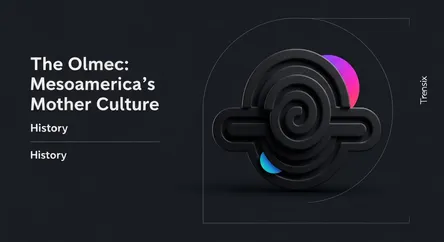History
The Olmec: Mesoamerica's Mother Culture

Discover the Olmec, the first major civilization in Mexico, known for their giant stone heads and lasting influence on later cultures like the Maya and Aztecs.
What is it?
The Olmec were the first major civilization in Mesoamerica, flourishing in the tropical lowlands of south-central Mexico from approximately 1200 BCE to 400 BCE. Often called the "mother culture" of the region, their primary centers included San Lorenzo and La Venta. They are most famous for their remarkable art, particularly the colossal stone heads sculpted from volcanic basalt, which are believed to be portraits of their rulers. The name "Olmec" is an Aztec term meaning "rubber people," likely referring to their pioneering use of rubber from local trees. Theirs was a complex society with evidence of social classes and extensive trade networks.
Why is it trending?
The Olmecs remain a topic of fascination due to their mysterious origins and foundational role in Mesoamerican history. As a "pristine" civilization that developed without major influence from others, they are credited with numerous innovations. These include the Mesoamerican ballgame, pyramid construction, and possibly the earliest writing system in the Americas. This legacy established a cultural blueprint that heavily influenced later civilizations like the Maya and the Aztecs. The enigma surrounding their sudden decline around 400 BCE, possibly due to environmental changes or volcanic activity, continues to fuel research and public interest.
How does it affect people?
The Olmec legacy is crucial for understanding the development of all subsequent Mesoamerican civilizations. Many of their cultural hallmarks, including religious deities like the feathered serpent, artistic styles, urban planning, and trade practices, were passed down through centuries. For people today, the Olmec heritage is a testament to the deep-rooted ingenuity of indigenous American societies. Their monumental art inspires awe and scholarly debate, while their cultural innovations laid a foundation that indirectly shaped regional traditions, connecting the present back to the dawn of Mesoamerican civilization.